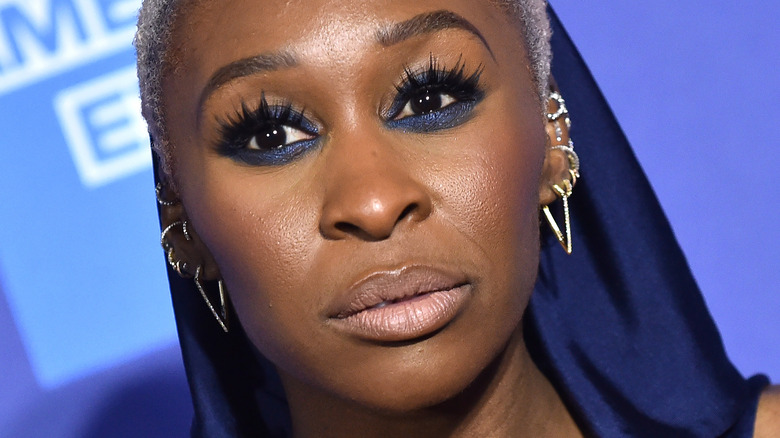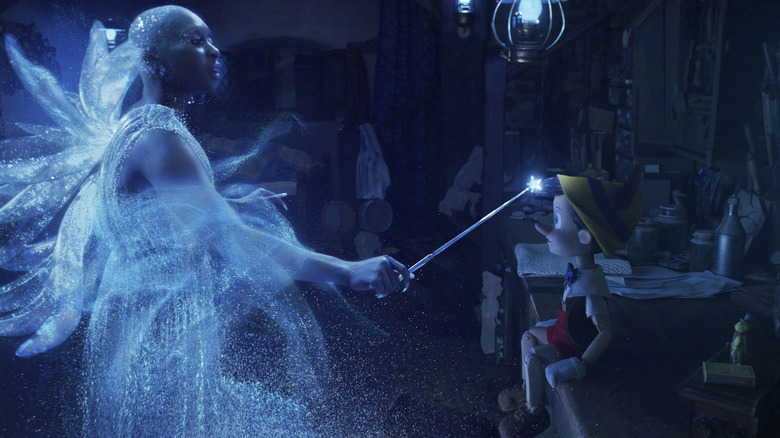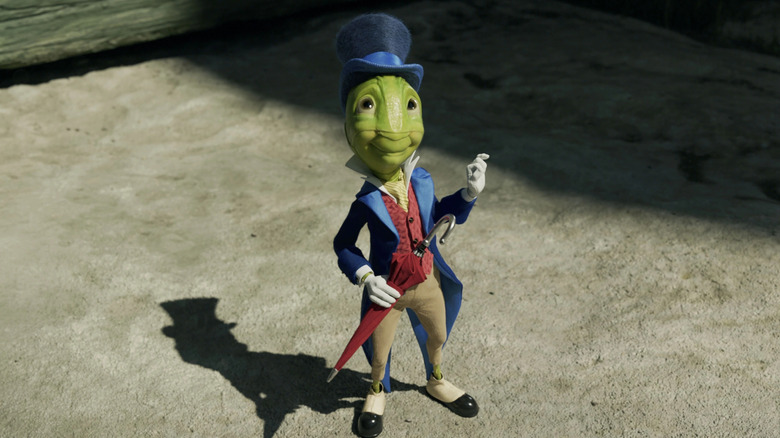Pinocchio (2022) Makes Very Little Use Of Their Blue Fairy Compared To The Original
Contains spoilers for Pinocchio (2022).
When it comes to Disney's history of animated fairies, the one that helps the little wooden boy in "Pinocchio" is always worth a mention. Rocking up to Geppetto's (Tom Hanks) workshop and breathing life into a father's dream of a son, the Blue Fairy checks all the boxes of magical allies by helping out and leaving the hero to figure out the rest of his adventure for himself. Roped in by a talking fox to become famous? She's off the clock. Swallowed by a sea monster? That's more of a mermaid's territory, surely? In the end, though, the Blue Fairy steps in to help deliver the win only when absolutely necessary, as is clearly displayed in the original 1940s film.
Back then, the ethereal wish granter was brought to life by Evelyn Venable, who both voiced and modeled for the role of the Blue Fairy. When it came to nailing the character's motion, that duty went to Marge Campion, who was also a point of reference for apple-munching homemaker Snow White in "Snow White and the Seven Dwarves." Now the duties of dispensing fairy dust unsupervised have gone to Oscar-nominated star Cynthia Erivo, who looks genuinely incredible as the live-action version and is easily one of the highlights of the entire film.
However, her involvement comes with some bittersweet news — because as great as her rendition of "When You Wish Upon a Star" might be, it's the only thing we get from her in the entire film.
Cynthia Erivo has only one scene in Robert Zemeckis' Pinocchio
In the latest CGI adaptation of Disney's back catalog, there are indisputable moments from the original film that had to make the edit for this new take. We needed to see a talking fox scam a child, a visit to a twisted take on Disneyland needed to happen, and Pinocchio had to use lying to his advantage (which still isn't the best life lesson). In the case of the Blue Fairy, however, while the original saw her dropping in on a few occasions to help the puppet protagonist, Erivo's iteration gets nowhere near as much screen time.
In the original film, Jiminy's unofficial boss — who, recall, appoints him as Pinocchio's conscience — drops in on three occasions. Firstly, to catch him out with his lying, and finally bringing him back to life after he saves his father from Monstro, the sea monster. For Erivo, though, she gets nowhere near the same involvement.
After lighting up the scene with her take of an iconic Disney song, this Blue Fairy disappears out of Geppetto's window, never to be seen again. It's a huge shame, not only because one of the film's saving graces is used nowhere near enough, but it also cuts short another character's arc and the well-deserved accomplishment that comes with it.
No Blue Fairy means no reward for Jiminy Cricket
While the film does try to put some distance between itself and the animated film it is adapting, this particular creative choice impacts the outcome for Jiminy, who is one of the other few perks of this take on "Pinocchio." Until the ending, Jiminy's story is almost beat for beat, the same as what came before, with Levitt delivering a pitch-perfect take on the character that carries echoes of Cliff Edwards' iconic iteration. That all changes, however, when it comes to the character's conclusion and the distinct lack of fairy dust missing from it.
Unlike the original, Pinocchio doesn't die saving his father, so the Blue Fairy doesn't need to return and revive the hero, as well as finally turn him into a real boy. The knock-on effect is that with no boy to save and lessons already learned, the Blue Fairy doesn't officiate Jiminy as a legit conscience. This little guy chases a boy made of wood for 48 hours — and saves him from kidnappers, human trafficking, and the literal belly of a beast — only to earn not so much as a "great work, here's a medal" statement.
Don't worry, Jiminy. We know you put the effort in.


